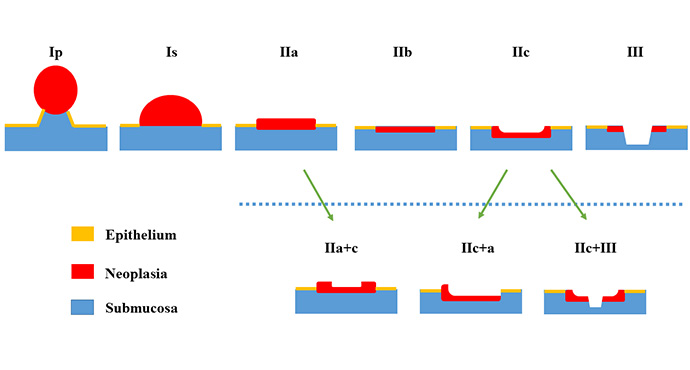Polyp differential diagnosis by endoscopy has become a hot topic in the frame of the DISCARD discussion, stating that histologic analysis of small/diminutive (< 5
Pit-Pattern
Pit-Pattern
Artificial Intelligence and Polyp Differentiation
Paris Classification: Early Barrett Cancers
In the following, examples for superficial/early Barrett lesions of the esophagus are shown. Here, flat and sessilelesions are predominant, pedunculated tumors are rare. Sessile tumor
Paris Classification: Early Colorectal Cancers
The Paris classification for superficial / early tumors should be part of a standard terminology for endoscopic assessment. This classification applies to the entire gastrointestinal
Paris Classification Early Cancer
Endoscopic treatment for early carcinoma in the gastrointestinal tract has in the meantime become evidence-based and has been incorporated into national and international guidelines
Paris Classification: Early Squamous Cell Cancers Esophagus
Examples of superficial/early squamous cell lesions in the esophagus are presented below. In the esophagus, flat lesions are predominant in the early tumors, and polypoid
Paris Classification: Early Gastric Cancer
Examples of superficial/early gastric tumors are shown below. In the stomach, flat lesions are predominant, often as combined lesions with a central depression (IIa+c). Sessile
Polyp Classification: NICE
The NICE (NBI International Colorectal Endoscopic) Classification is based on narrow-band images of colon polyps. The classification uses staining, vascular patterns, and surface patterns to







